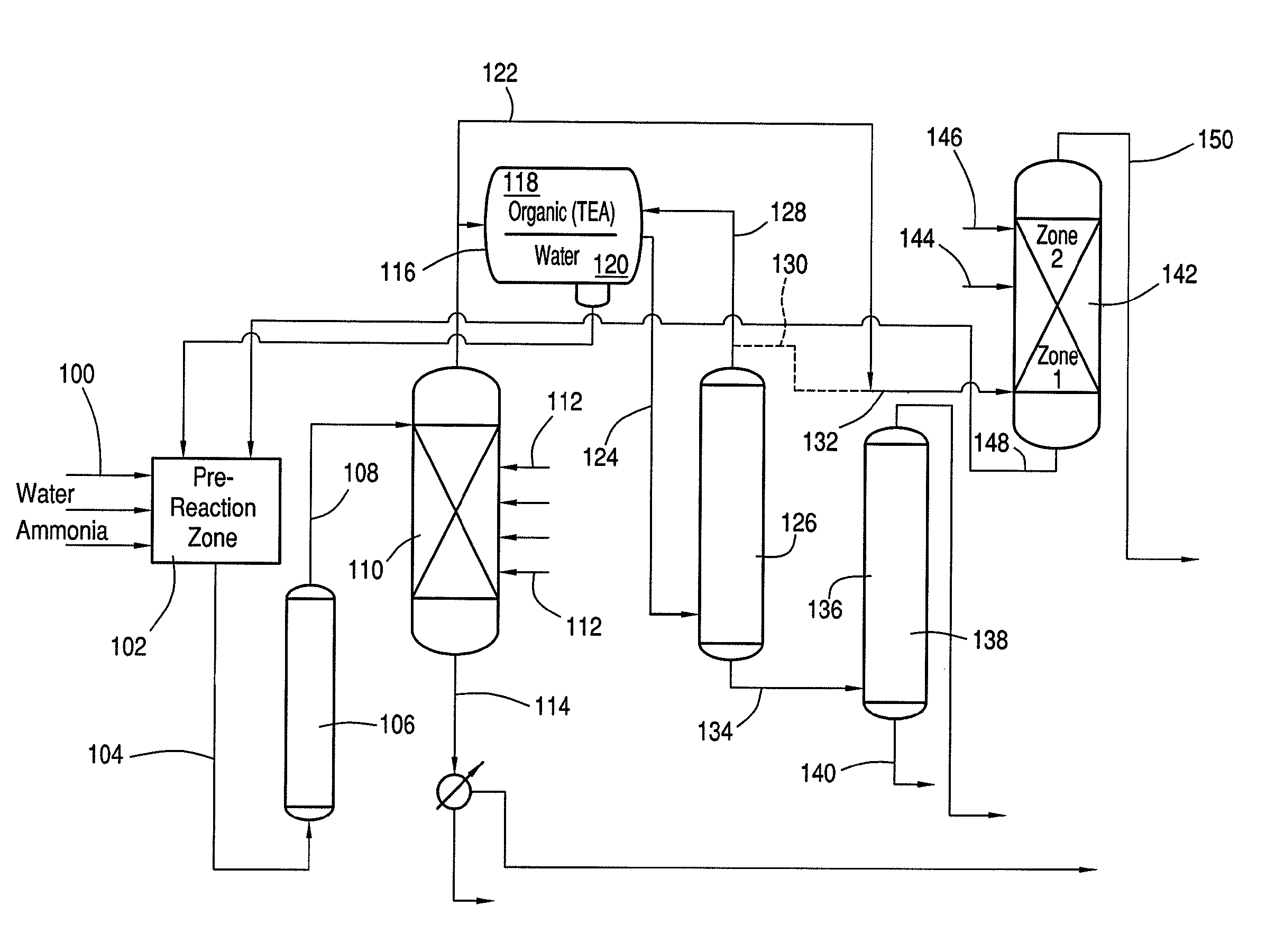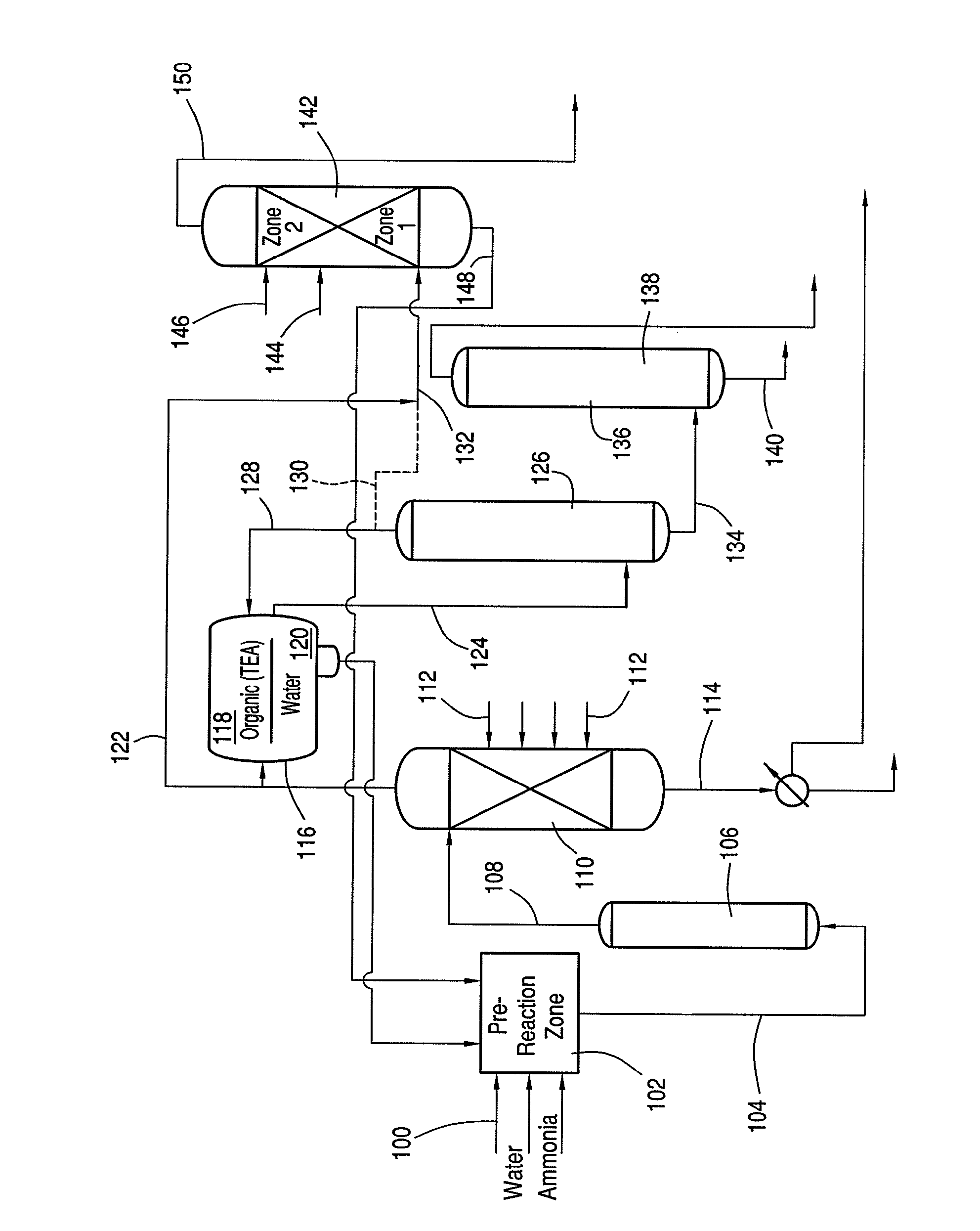Process for producing ammonium salts
a technology of ammonium salt and ammonium sulfate, which is applied in the direction of separation process, organic chemistry, dispersed particle separation, etc., can solve the problems of high yield of tertiary amines recovered by this process, high cost of separation, and high toc remaining in ammonium sulfa
- Summary
- Abstract
- Description
- Claims
- Application Information
AI Technical Summary
Benefits of technology
Problems solved by technology
Method used
Image
Examples
Embodiment Construction
Introduction
[0014]Conventional processes may treat waste streams that comprise sulfuric acid and organic tertiary amines with ammonia 1) to separate the organic tertiary amines and 2) to produce ammonium sulfate, which is commercially valuable in the fertilizer industry. These conventional processes, however, yield high amounts of unreacted ammonia. This unreacted ammonia typically exits the process as a vapor and is often purged and / or goes unutilized. As a result, these conventional separation processes have low overall ammonia conversions.
[0015]The present invention relates to the production of ammonium sulfate from a process stream that comprises sulfuric acid and organic tertiary amines (or precursors thereof). In the inventive process, sulfuric acid in the process stream is reacted with ammonia in a primary reaction unit to form a first amount of ammonium sulfate. Preferably, an excess of ammonia is utilized to maintain a pH value favorable for the formation of the desired pro...
PUM
| Property | Measurement | Unit |
|---|---|---|
| compressive strength | aaaaa | aaaaa |
| pressure | aaaaa | aaaaa |
| pressure | aaaaa | aaaaa |
Abstract
Description
Claims
Application Information
 Login to View More
Login to View More - R&D
- Intellectual Property
- Life Sciences
- Materials
- Tech Scout
- Unparalleled Data Quality
- Higher Quality Content
- 60% Fewer Hallucinations
Browse by: Latest US Patents, China's latest patents, Technical Efficacy Thesaurus, Application Domain, Technology Topic, Popular Technical Reports.
© 2025 PatSnap. All rights reserved.Legal|Privacy policy|Modern Slavery Act Transparency Statement|Sitemap|About US| Contact US: help@patsnap.com


